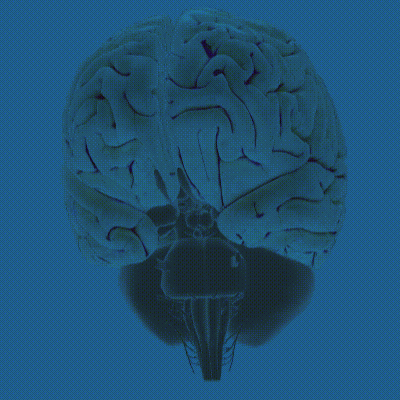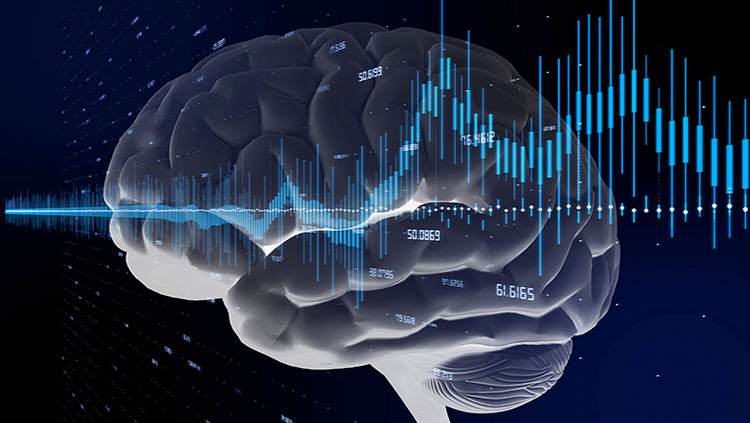When the Brain Starts Adulting
- Reviewed20 Nov 2018
- Author Alexis Wnuk
- Source BrainFacts/SfN

Your brain changes a lot between birth and adolescence. It grows in overall size, modifies the number of cells contained within, and transforms the degree of connectivity. The changes don’t stop once you turn 18. In fact, scientists now think your brain continues maturing and fine-tuning itself well into your 20s. So, when is a human brain finally done developing? And, with all the effort that it takes to build, what’s so special about the end result?
An adult brain differs from an adolescent brain in many ways. Between childhood and adulthood, the brain loses gray matter as excess neurons and synapses are pruned away. The rate of loss slows down by a person’s late 20s. At the same time, some brain regions strengthen their connections with each other, and the major nerve tracts become wrapped in insulating myelin, which increases the brain’s white matter. White matter volume peaks around age 40.
Much of the added white matter represents increased connections between widely separated brain areas. During childhood and adolescence, most brain networks are locally organized — areas near each other work together to accomplish a cognitive task. As we mature, distant areas of the brain begin linking up with each other, leading to larger and more widely distributed networks.
The most important brain area to become fully “wired up” in adulthood is the prefrontal cortex — the front portion of the frontal lobe. This area handles many of our higher-level cognitive abilities such as planning, solving problems, and making decisions. It is also important for cognitive control — the ability to suppress impulses in favor of more appropriate actions. The adult brain is better wired for cognitive control compared to the adolescent brain, which is more influenced by emotions, rewards, and social acceptance when it comes to making decisions.
Intelligence also peaks during early to middle adulthood, roughly ages 25 to 60. However, intelligence involves many different cognitive abilities, each of which develops on its own timescale. Fluid intelligence, which includes abilities like solving problems and identifying patterns, peaks around age 30. By contrast, crystallized intelligence, which deals with vocabulary and knowledge of facts, increases until about age 50.
While the adult brain is more cognitively capable than the teen brain, there might not be a single point in adulthood at which all (or even most) of our cognitive functions operate at peak performance.
This article was adapted from the 8th edition of Brain Facts by Alexis Wnuk.
CONTENT PROVIDED BY
BrainFacts/SfN
References
Bender, A. R., Völkle, M. C., & Raz, N. (2016). Differential aging of cerebral white matter in middle-aged and older adults: A seven-year follow-up. NeuroImage, 125, 74–83. doi:10.1016/j.neuroimage.2015.10.030
Cohen, A. O., Breiner, K., Steinberg, L., Bonnie, R. J., Scott, E. S., Taylor-Thompson, K. A., … Casey, B. J. (2016). When Is an Adolescent an Adult? Assessing Cognitive Control in Emotional and Nonemotional Contexts. Psychological Science, 27(4), 549–562. doi:10.1177/0956797615627625
Fair, D. A., Cohen, A. L., Power, J. D., Dosenbach, N. U. F., Church, J. A., Miezin, F. M., … Petersen, S. E. (2009). Functional Brain Networks Develop from a “Local to Distributed” Organization. PLOS Computational Biology, 5(5), e1000381. doi:10.1371/journal.pcbi.1000381
Hartshorne, J. K., & Germine, L. T. (2015). When does cognitive functioning peak? The asynchronous rise and fall of different cognitive abilities across the life span. Psychological Science, 26(4), 433–443. doi:10.1177/0956797614567339
Hedman, A. M., van Haren, N. E. M., Schnack, H. G., Kahn, R. S., & Hulshoff Pol, H. E. (2012). Human brain changes across the life span: a review of 56 longitudinal magnetic resonance imaging studies. Human Brain Mapping, 33(8), 1987–2002. doi:10.1002/hbm.21334
Somerville, L. H. (2016). Searching for Signatures of Brain Maturity: What Are We Searching For? Neuron, 92(6), 1164–1167. doi:10.1016/j.neuron.2016.10.059
Sowell, E. R., Peterson, B. S., Thompson, P. M., Welcome, S. E., Henkenius, A. L., & Toga, A. W. (2003). Mapping cortical change across the human life span. Nature Neuroscience, 6(3), 309–315. doi:10.1038/nn1008









.jpg)










